Dynamic content has been so seamlessly incorporated into our everyday lives that we don’t really notice it’s happening. In fact, we’re more likely to notice when something isn’t optimized for our personal lifestyle and needs. Why is that?
Marketers understand the power of personalization and technology has given us unique ways to keep up with the evolving expectations of consumers. Because of this, consumers come across all kinds of platforms that already have their browsing behaviors in mind and ready. Searching for the next show to binge? Netflix has multiple recommendations lined up. Needing a new pair of sneakers for the gym? Google has your search history recorded and sends your browsing history as ads to your Facebook, Instagram, and Twitter feeds to reference.
If dynamic content hasn’t come across your radar, read on to learn about utilizing this tool and find inspiration for ways to boost your own conversions.
What is Dynamic Content?
Dynamic content is content that appears intuitively and is triggered by several pre-defined conditions that work together to signal the type of content that appears to a user. This can change over time depending on the type of actions a user takes, as well as the conditions set up by the marketing team.
This is an effective strategy to incorporate because it makes the experiences you create for your audience both relevant and personalized. There’s plenty of details that dynamic content accounts for that elevates the experience, from highlighting holiday-related sales to generating user-specific deals and discounts. This is also an approach that you can implement across all forms of communication, from your website to emails to landing pages, and more.
Dynamic Content on Websites
Dynamic experiences on websites are so well created that if they weren’t in place, the browsing experience would feel off.
A first-time visitor may receive a pop-up ad to create an account in exchange for 10 percent off their first order. On the other hand, someone who is a seasoned shopper and has tons of loyalty points saved up may receive a reminder that those in a certain tier receive free shipping on all orders. Now imagine if the actions were flipped. Ten percent off the first purchase for someone who has already ordered multiple times in the past year? Free shipping offers to first time shoppers with no account tied to the website? That creates an irrelevant experience for the user which is what dynamic content works to prevent.
This is also useful in situations outside of user behavior. Dynamic content is part of the reason why you wouldn’t receive restaurant recommendations in Miami when you’ve already been living in Chicago and ordering food in your area.
Advertising relevant sales in real time also falls within this realm. Dynamic content keeps these deals in the forefront and attracts visitors to various pages and products across your site. Take International Women’s Day, for example. This day of recognition spurred a series of sales all across the internet. Steam included their Women’s Day Sale lasting through March 10, 2022 right on the very first page, tempting anyone who came across it to click and scroll through all the options on a separate, dedicated page.
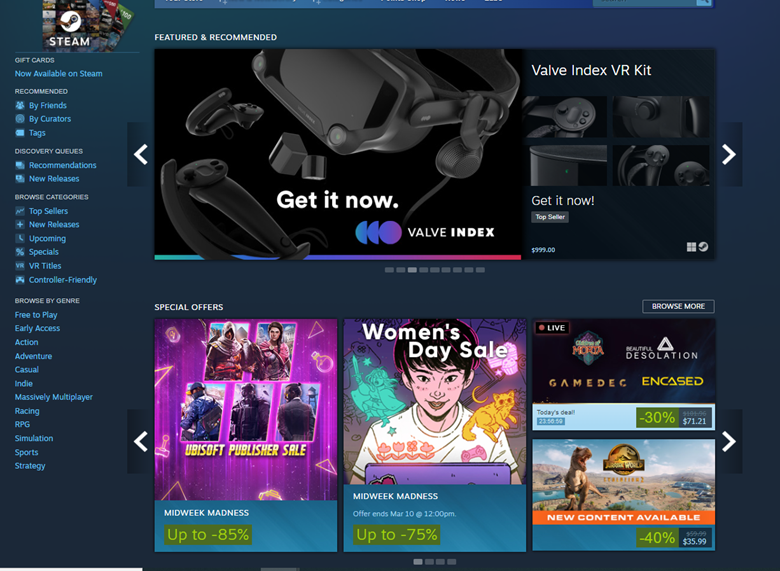

Dynamic Content in Email
Email is also an excellent place for dynamic content to thrive. There are so many personalization opportunities you can go after when it comes to your subscriber list.
Those with the resources and the manpower can create an entire year-in-review email, highlighting the actions someone took on the site. Those without can take a more hands-on method of approach and start collecting data, sorting information, and manually creating the foundation needed for dynamic content.
Check out our recent dynamic content test in which we curated some of our top blog posts from 2021 based on the department the recipient works in to learn more about the impact dynamic content in email can have on engagement.
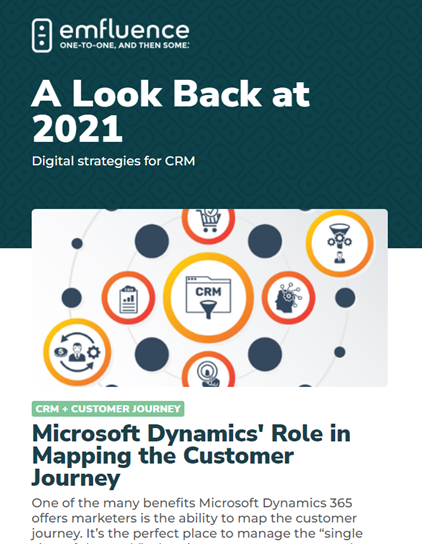
Another example of how dynamic content works its way into our lives seamlessly via email is with the Microsoft Viva emails that you may have seen in your own inbox. These consist of daily briefings and monthly digests that show you your upcoming workday and a recap of your previous work month. It even syncs up related messages and documents it finds in your inbox and compiles it all in one place for you to access. When you scroll through the email, there are also options for setting focus time, learning time, and break time around the rest of your day.
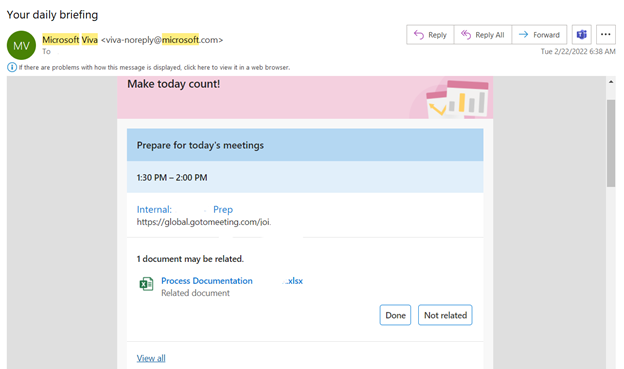
Dynamic Content in Ads
And, finally, you can find dynamic content in action in ads. This is the aspect of digital marketing and the internet that manifests into those “my phone is listening to me” conversations when someone receives an advertisement that feels almost too relevant. This happens to people all the time where they search for a product, forget about it, and see it appear on their Facebook Feed the next day.
Dynamic content in ads adapts with the user just like in any other setting. This means if I’m searching for self-help books one week and then Easter egg decorating kits the next, my ads will gradually change alongside my search habits.
This Starbucks ad is one example that showed up on my Facebook Feed. This popped up to advertise their newest in-app game that gives you the opportunity to win stars, as well as free food or drinks. This didn’t appear on my page from following Starbucks on Facebook—I double checked this and I actually don’t. Rather, it more likely appeared because I use the app consistently to pay for drinks and have consistently visited their webpage during previous gaming periods.
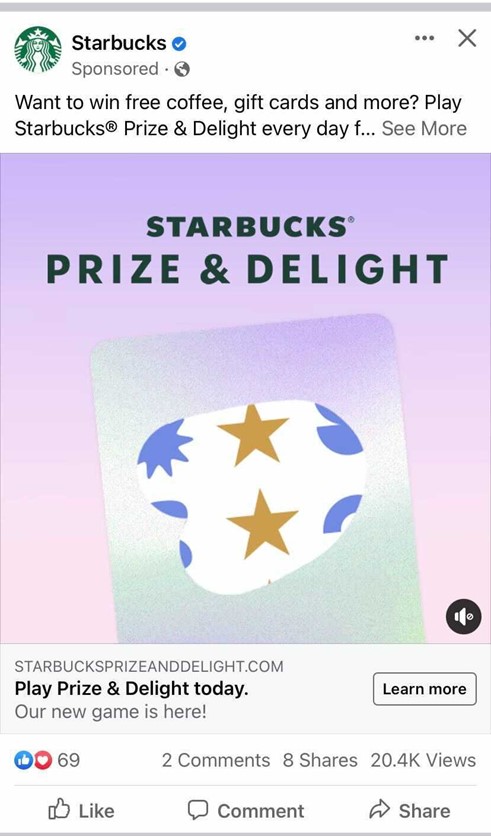
Examples of Dynamic Content
Where there are examples, there is potential for inspiration. It is one thing to talk about dynamic content and another to see it play out on the internet. When we say that it is everywhere, we mean it! These are just a few of the many examples that could be found in one sitting.
The first is an ad that appeared on my Instagram while scrolling through posts of my friends living their best lives. How did this piece of ad content fit my exact situation? For one, I’ve been reading eBooks a lot recently, so much so that I’ll search new titles almost every other day and track my progress using the app/website Goodreads which is super popular with the book lover community. And, as Amazon already knows, I do quite a bit of shopping on their site. This ad is nudging me towards a very specific direction and saying, “Hey, why not combine the two?”
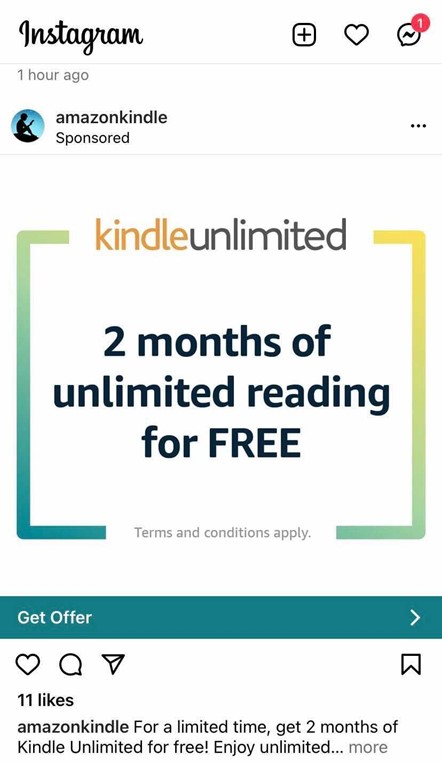
These two emails from Petco also showcase how dynamic content leads to relevant content. From a quick glance, you can tell that I own a cat. Petco also knows this because I have a rewards account connected to my email which I’ve only really used to purchase cat-related items.
In one email was a link to a guide that any pet owner who cares about their furry friend would click on (which I proceeded to do a second later). In another email, I was sent an ad to sign up for a service called Repeat Delivery that also showed me purchases I’d made in the past that are available for this service.
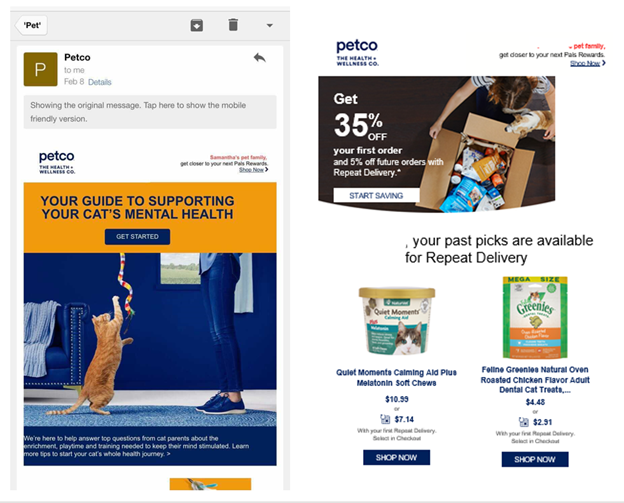
Another Instagram ad knew exactly what I was looking for and which brands to reintroduce. This one features an online store that many of my friends use to shop for dresses. I’d also been browsing dresses on multiple sites in anticipation for a couple of weddings coming up. Did this dynamic content hit the mark? I’d say it definitely did.

As a follow-up to this, I also visited the Lulus site which included three pieces of dynamic content straight from the get-go. Take a look for yourself and see what you can spot:
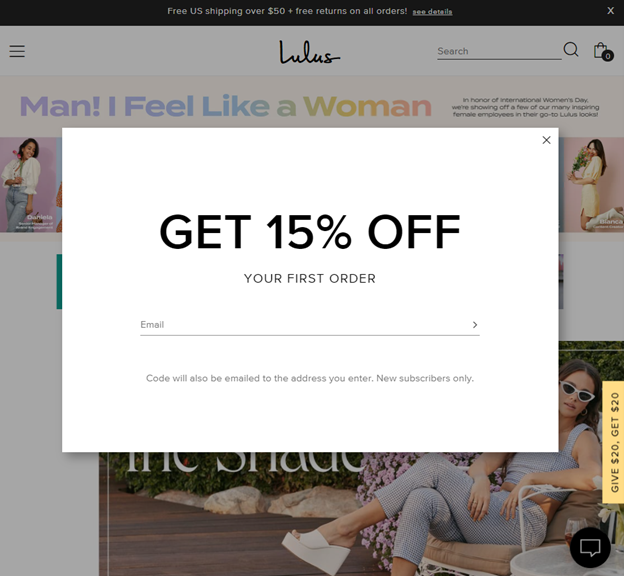
This is what I noticed:
- Geo-targeting to personalize offers. “Free US shipping over $50+ free returns on all orders!”
- Customer lifecycle based personalized offers. “Get 15% off your first order” with a discount code sent to the email address you enter.
- Retention campaign. “Give $20, get $20” for first time purchases your friends make.
Finally, Target is great at incorporating dynamic content onto their website. Yes, they are one of the retail giants with homepage widgets of holiday guides that will take you down a rabbit hole of festive tableware and must-have kitchen essentials for Thanksgiving dinner.
They’re also great at keeping track of your interests at other times throughout the year. This is what shows up when I scroll through their page—an organized carousel list of all the chairs I recently browsed through while trying to pick out a new accent chair for my desk. Spoiler alert: I did end up ordering the second one in this lineup.
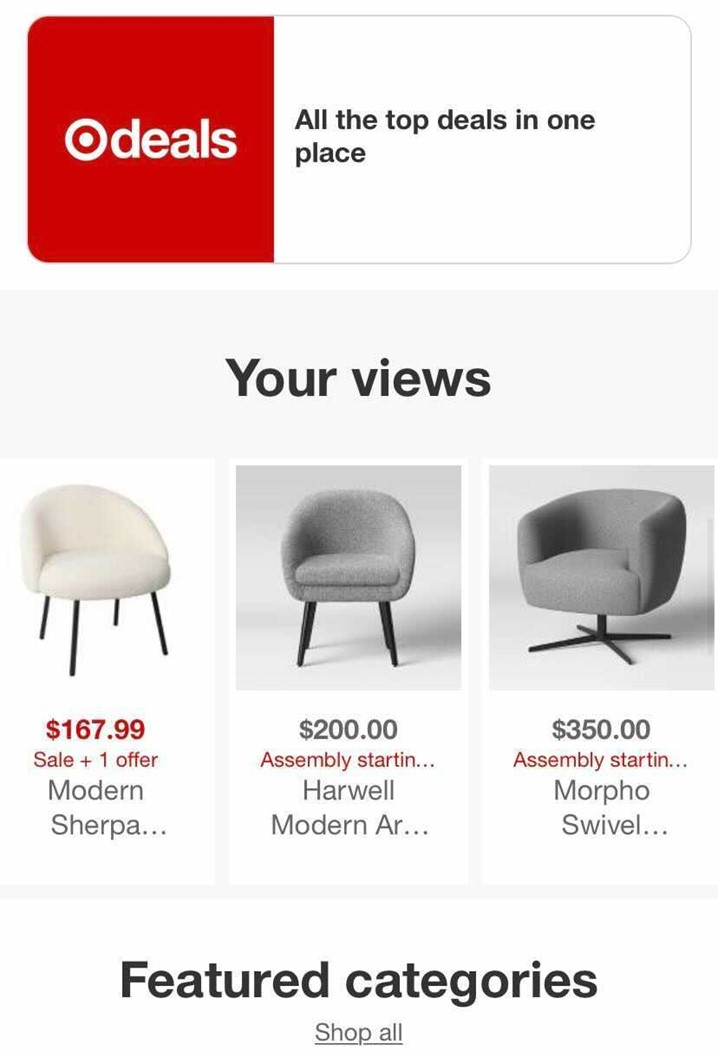
Best Practices for Dynamic Content
Dynamic content works and boosts conversions! I acted on a majority of the dynamic content examples in this blog and followed through to the site to wherever and whatever was being advertised. I even bit the bullet and dropped part of my paycheck on a purchase. These are the kinds of results that all marketers want and dynamic content can help to achieve.
When crafting your own content, it can seem like there’s a lot to keep track of. The important part is to keep it as real-time as possible. For example, if a sale is over, make sure to have a different webpage to redirect to rather than an error page. If a coupon is expired, have the text read “expired” rather than the outdated expiration date.
Proofing your work before it goes live will also prevent any headaches or fires. You don’t want to make something publicly visible until you’re sure it’s good to go. Otherwise, you could end up confusing your audience or sharing information that’s incorrect.
Reuse your content where you can and across multiple channels. You put in the work to set it up and it doesn’t have to be contained to one use or one platform. If you’ve created a personalized coupon in an email, have it follow the user to your site in the form of a banner or lightbox. This is a good strategy that will maximize exposure to your audience.
Finally, have a good idea of how your dynamic content is functioning within the overall sales funnel. Is it meant to introduce? Nurture? Engage? While it’s easy and can be fun to get absorbed into a genius piece of dynamic content you’ve created, make sure to take a step back and look at the big picture and how it plays into your overall marketing strategy.
Need help with dynamic content on your website, in ads, or as part of your email strategy? Contact us at expert@emfluence.com!



